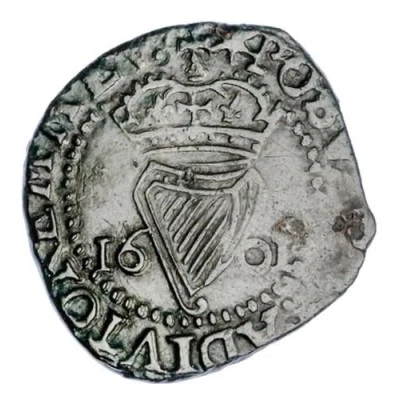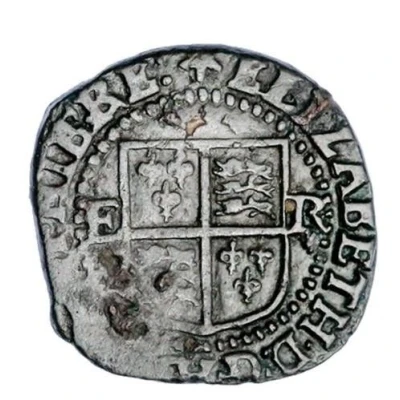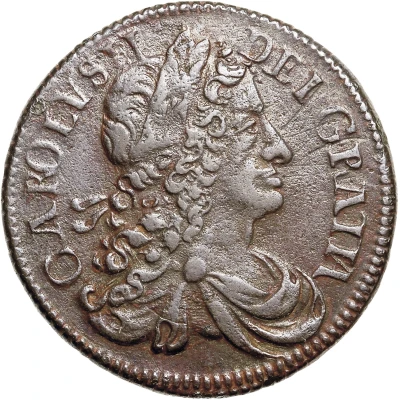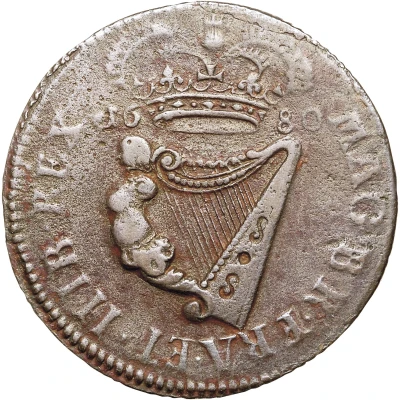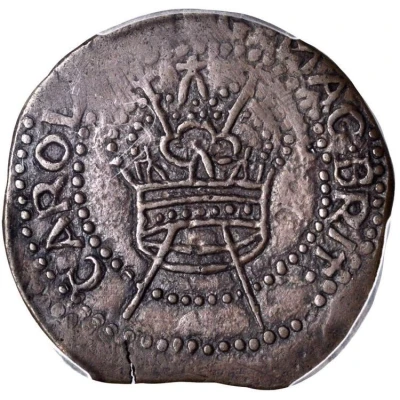
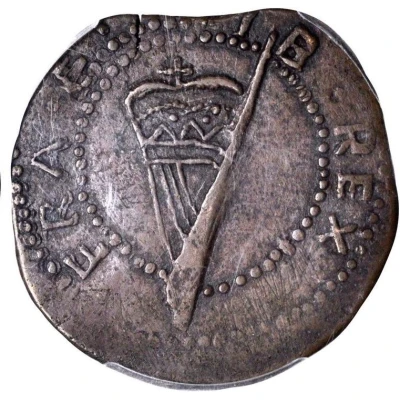

© Stacks Bowers
½ Penny - Confederate Catholic Kilkenny issue ND
| Copper | 4 g | 27 mm |
| Issuer | Ireland |
|---|---|
| Period | Catholic Confederation (1642-1643) |
| Type | Standard circulation coin |
| Years | 1642-1643 |
| Value | ½ Penny (1⁄480) |
| Currency | Second Irish Pound (1460-1826) |
| Composition | Copper |
| Weight | 4 g |
| Diameter | 27 mm |
| Shape | Round (irregular) |
| Technique | Hammered |
| Demonetized | Yes |
| Updated | 2024-10-05 |
| Numista | N#332451 |
|---|---|
| Rarity index | 100% |
Reverse
Crowned harp dividing initials C R within beaded circle. Beaded border.
Script: Latin
Lettering: FRA · ET · HIB · REX
Unabridged legend: Franciae et Hiberniae rex
Translation: ...King of France and Ireland
Comment
Crudely struck issue with broad weight variation (about 3 to 5 grams).Confederation of Kilkenny (1642-49)
When the Great Rebellion broke out in Ireland in 1642, chaos broke loose and multiple scores began to get settled amidst a haze of sectarian violence, land grabs, political intrigue and internecine warfare.
The Catholic clergy exerted themselves to bring about union amongst the Catholics; and on the 24th of October 1642 a general assembly or parliament—delegates of the most distinguished persons from both sides—met in Kilkenny: this is known as the “Confederation of Kilkenny.”
There were eleven bishops, fourteen lords, and 226 commoners.
The assembly took upon themselves to govern the country—or that part of it outside the influence of Ormonde—and appointed generals over the army: O’Neill for Ulster and Preston for Leinster.
To manage affairs with greater facility they elected from their number a “Supreme council.”
And they issued a decree for raising money and for levying men, who were to be drilled by the officers that had come with Preston and O’Neill.
Interesting fact
The ½ Penny - Confederate Catholic (Kilkenny issue) ND (1642-1643) coin from Ireland is interesting because it was issued during a time of political and religious turmoil in the country. The Confederate Catholics were a group of Irish Catholics who rebelled against the English Protestant government in the 17th century, and this coin was likely used to finance their military efforts. Despite its historical significance, the coin is relatively rare and valuable, with some examples selling for thousands of dollars at auction.
